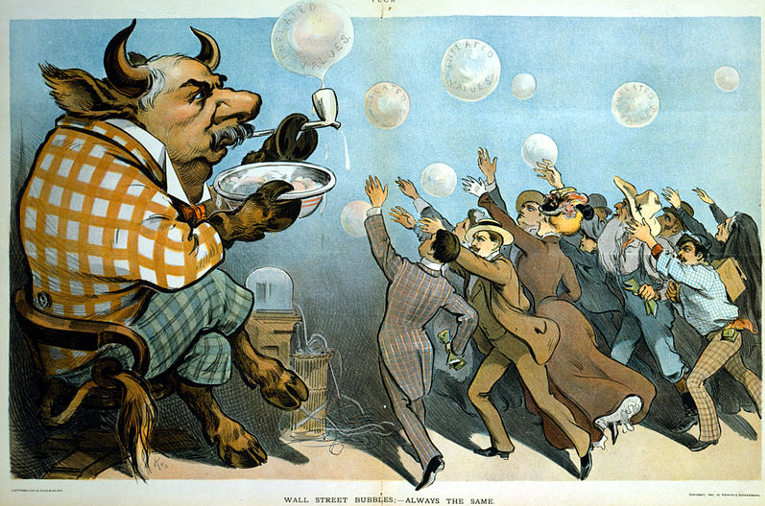The core assumption and focus of people who work to drive sustainability through markets – as corporate leaders, investors, NGOs or thought leaders – is that we need to convince existing companies and their shareholders that sustainability is first good for their business, and secondly, they can successfully transition to a sustainable business model.
But what if both of these are wrong? As someone who has spent over 25 years in that world, I’m starting to think they both might be. If so, it calls into question the very basis of the work literally millions of us are engaged in. So, it is at least worth a discussion!
The first point is the foundational question – that sustainability is broadly good for business. Not business as a concept, but business as specific institutions.
Having been a corporate sustainability “insider” for two decades I can see how the idea emerged. It came from a time when action on sustainability was primarily about improving efficiency and cutting pollution while treating your people and communities well. These were good things to do, and they really were good for all businesses in the 1990s. They lowered costs, reduced risks and gave companies a sense of purpose.
But the world has changed. Today sustainability is an existential threat to the global economy and that means the scale and speed of change required is profoundly different.
We are now up against time bounded needs that can only be addressed through radical innovation in technology and business models – inevitably resulting in disruptive change across the market. Anything less will see issues like climate change, pollution, inequality and resource constraint pose system wide threats to global economic and social stability.
Given this, sustainability is only “good for business” for today’s major companies if they can transform – either dramatically in how their business operates or in some cases (e.g. oil majors) transforming into different companies entirely.
This raises my second question. Can incumbents transform? The question can’t be answered in theory or conceptual potential, but in practice – in the reality of how markets work, and how businesses are run. For this we have a great deal of evidence of previous and ongoing transformations and disruptions.
As I introduced in my last column, the essence of the answer lies in recognising that markets are defined by a process of “creative destruction” – old and slow companies are taken over and replaced by new and fast ones. Not always destroyed but made so small they slip from sight.
We see this throughout economic history as the key driver of change within the market system and, critically in the sustainability context, the fastest. It doesn’t just apply when the driver of change is inherently disruptive e.g. digital technology or renewable energy. It then happens faster and more dramatically, but history tells us it happens anyway. In fact, it defines how markets normally operate. The only difference today is that it is getting faster.
Consider the latest research by growth strategy advisors Innosight (co-founded by innovation guru Clayton Christensen from Harvard Business School). The numbers are startling, arguing that “the 33-year average tenure of companies on the S&P 500 in 1964 narrowed to 24 years by 2016 and is forecast to shrink to just 12 years by 2027.” That means about half the companies on the S&P 500 will fall off it in just 10 years! This shows “creative destruction” is endemic to the market. Of course, it is not a universal rule, but it is the dominant market tendency and shows how rare true transformation is.
This calls into serious doubt the foundational assumptions made by people and organisations who have spent many decades driving corporate sustainability – including myself! If most major companies will die or at least shrink to irrelevance and be replaced, why do we try to change them? And what does this mean for sustainability focused investors and policy makers?
The key questions to understand are why incumbents fail – and can this be addressed – and what can be done to accelerate the success of the disruptors? I will be focusing my work on this issue over the coming year at the University of Cambridge Institute for Sustainability Leadership, via this new research programme I am supporting.
This research will explore my hypothesis on what the current evidence suggests:
- Incumbent businesses, no matter how good their intentions, rarely deliver disruptive change. When they do – often by buying disruptors – they are driven more by the threat from disruptive players than their own insights or strategies. Fear of loss is the driver for incumbents, not opportunity. There is a live example today with Tesla and the auto industry.
- Disruptive players usually win because they are not held back by the assets, culture and risk aversion of incumbents. There are exceptions (and why they are is very important), but they do not define how the system behaves.
- Capital follows opportunity and growth, but rarely prices risk accurately. Thus, markets crash, carbon bubbles pop and boom/bust cycles are inevitable in disruption. But over time, markets get it right. The dot com boom correctly sensed the possibilities and the dot com crash didn’t prevent tech companies from dominating today’s stock markets.
- Markets are ruthless and unsentimental. They have no ideology except self-interest and will happily for example, destroy the oil industry and do so quickly when they act.
This all suggests that, given the scale and speed of change needed on sustainability, many and perhaps most of today’s major old companies, simply won’t get there. Not because they couldn’t in theory, but because they won’t in practice. They have some combination of products, assets, culture and values that means transitioning is simply too difficult, too expensive in the short term or just isn’t going to happen in time. They will instead be replaced by new companies – a process profoundly beneficial to the economy.
If this is right, it calls into question the very foundation of the global movement for corporate sustainability. We need to have that discussion.






